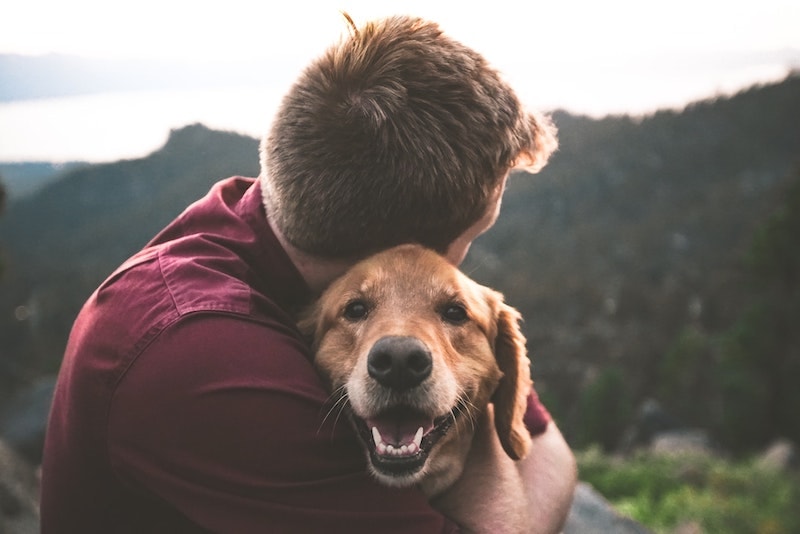In this article
View 4 More +Note: This article’s statistics come from third-party sources and do not represent the opinions of this website.
For many years animals have had a special place in the heart of residents of India. Animals have been viewed as their friends and partners, represented in art and sculptures as the companion of deities, and have long been a symbol of power.
With this rich historical relationship between Indians and animals, you may be curious about what the state of pet ownership in the country is like. In our guide, we’re going to provide a wide range of fascinating Indian pet ownership statistics like how many people own pets in the country, which pets are most popular, the state of homeless pets in India, and more.

The 14 India Pet Ownership Statistics
- There are nearly 69 million homeless cats and dogs living on the streets or in shelters in India.
- 50% of all pet owners in India admit to relinquishing a pet since the start of the COVID-19 pandemic.
- When people in India see a stray dog, 50% treat them compassionately, compared with 46% of people who see stray cats.
- Dogs are the most common pets in India, with 63% of pet owners having a dog and 42% having a cat.
- 45% of Indians don’t have a pet at all.
- There are over 31 million pet dogs in India.
- There are 2.44 million pet cats in India.
- The pet cat population may reach 4.89 million by 2026.
- 11% of people in India own at least four pets.
- The pet food market in India is projected to register a Compound Annual Growth Rate of 4.7% through 2027.
- India’s pet care market is projected to grow at a value of INR 7,500 Crores by the end of 2026.
- Over 32,000 Indians admitted to possessing exotic live animals.
- Around 12,000 invasive red-eared slider turtles were seized by the customs authority in Tamil Nadu between 2018 and 2020.
- 6% of all reptile imports into India between 1976 and 2018 were unreported.


Homeless Pets in India Statistics
1. There are nearly 69 million homeless cats and dogs living on the streets or in shelters in India.
(State of Pet Homelessness Project 1)
The State of Pet Homelessness found that an estimated 69.3 million homeless cats and dogs roam India. According to the research, there are 8 million street or stray cats and 52.5 million street or stray dogs. These numbers are quite staggering; however, when compared to 2021, the number of homeless animals has decreased by over 10 million.

2. 50% of all pet owners in India admit to relinquishing a pet since the start of the COVID-19 pandemic.
(Times of India)
When the COVID-19 pandemic began in 2020, many people turned to their pets for companionship during lockdowns. While some people relinquished their pets at the start of the pandemic as they were afraid that their pet might pass on the coronavirus, others welcomed a pet into their home. As the adoption trend began to fade, the relinquishment numbers started to rise. 50% of all pet owners in India admitted to relinquishing a pet since the start of the pandemic while the global level of pet relinquishments is just 28%.
3. When people in India see a stray dog, 50% treat them compassionately, compared with 46% of people who see stray cats.
(State of Pet Homelessness Project 2)
Most animals living on the streets always need to be aware of potential dangers. Thankfully, around 50% of people will treat stray cats and dogs kindly. Hopefully, more people will follow this lead because between 24% and 27% of people chase the animals away. Around 28% do nothing.

General Pet Ownership Statistics in India
4. Dogs are the most common pets in India, with 63% of pet owners having a dog and 42% having a cat.
(TGM Research)
Dogs are a popular pet in the USA, with 44.6% of American households owning at least one dog. But India surpasses that figure by almost 20%. A whopping 63% of Indians own a dog. India also beats the USA in terms of cat ownership, with 42% owning at least one compared to the USA figure of 26%. While dogs and cats are the most commonly owned pets in India, people share their homes with other animals as well. Coming in as the third most commonly owned pet is fish, with 19% of people having at least one. The pets that follow are parrots (11%), rabbits (6%), and turtles (3%).

5. 45% of Indians don’t have a pet at all.
(State of Pet Homelessness Project 2)
Owning a pet is a serious decision, and it is not the right choice for many people. When surveyed about why they don’t want a pet, the two main reasons people listed were that they were scared the animal might become aggressive or that pets were unhygienic. There were some other reasons, like carrying diseases and the smell, but fear and hygiene were the top reasons.
6. There are over 31 million pet dogs in India.
(Statista 1)
The pet dog population has been on a steady rise in India. In 2018, there were over 19 million pet dogs, and that number jumped to 31.41 million in five years. It is estimated that the pet dog population will reach 43.9 million by 2026!

7. There are 2.44 million pet cats in India.
(Statista 2)
While cats may not be as popular as dogs, there are still 2.44 million of them that add joy and love to their owners’ hearts. Cat ownership saw a decline this year, with 3.27 million in 2022; this is over an 800,000 decrease in the population.
8. The pet cat population in India may reach 4.89 million by 2026.
(Statista 2)
Even though cat ownership declined in 2023, trends indicate that there could be close to 5 million pet cats by 2026. This would significantly help the pet food industry in India. Hopefully, cats will be acquired from shelters that rescue street cats.

9. 11% of people in India own at least four pets.
(TGM Research)
While most people in India own just one pet (57%), 11% of people have at least four! This can be a combination of multiple dogs, cats, or a mix of any house pet that crawls, swims, or flies. People who own two pets are 18% of the pet-owning population, and people who own time equal 13%. Note: there is a 1% error in margin with these statistics.

The Pet Sales Market in India
10. The pet food market in India is projected to register a Compound Annual Growth Rate of 4.7% through 2027.
(Mordor Intelligence)
The Indian pet food market is forecasted to register a Compound Annual Growth Rate (CAGR) of 4.7% by 2027. The pandemic caused a significant impact on not only the pet market in India but the food market for pets as well.
In India, the pet food market focuses predominantly on packaged and ready-to-eat foods that are designed to provide complete nutrition for pets.

11. India’s pet care market is projected to grow at a value of INR 7,500 Crores by the end of 2026.
(Research and Markets)
A report titled “India Pet Care Market Outlook, 2021–26” provides a comprehensive look at the current and forecasted pet care market in India. The sectors that were looked at extensively include pet food, accessories, grooming, and healthcare. The report also dives deeper into the market share by pet type (e.g., dog, cat, rabbit, etc.), food type (e.g., wet, dry), accessories (e.g., toys, collars, leashes, beds, etc.), and grooming items (e.g., brushes, trimmers, etc.). It is further divided by sales channels, regions, cities, and major companies.
The report suggests that the pet care market in India is expected to grow at a value of INR 7,500 Crores by the end of 2026. The dog segment of the market accounts for more than half of the market share.

India & Exotic Animals
12. Over 32,000 Indians admitted to possessing exotic live animals.
(Ministry of Environment, Forest and Climate Change via IndiaSpend)
In June 2020, a central government agency in India announced a voluntary disclosure scheme to encourage citizens to declare possession of any exotic and live animal species. This includes any animal or plant that has been moved away from its native home region. The government agency promised that no action would be taken against the owners of these animals, even if they’re owned without any proper documentation.
By February of 2021, the Ministry of Environment, Forest, and Climate Change reported receiving 32,645 applications from Indians in possession of these exotic live species.
Indians residing in West Bengal submitted the most disclosures accounting for 30% of all disclosures received with people from Kerala coming in second at 26% of all disclosures.

(Wildlife Conservation Trust)
The IUCN’s Invasive Species Specialist Group has named the red-eared slider turtle, a popular pet in Western countries, as one of the World’s Worst Invasive Alien Species. The species is native to the Mississippi River area in the United States but has been traded so frequently in foreign markets that it’s now an invasive species in over 75 countries including India. It is believed that the red-eared sliders are a threat to the native turtle species in India as well as the overall aquatic biodiversity.
Between 2018 and 2020, over 12,000 red-eared sliders were seized by the customs authority at airports in Tamil Nadu.
14. 6% of all reptile imports into India between 1976 and 2018 were unreported.
(Journal of Threatened Taxa)
The exotic pet trade in India is not legally regulated so not much is known about the scale at which it is carried out in the country. CITES, the Convention on International Trade in Endangered Species of Wild Fauna and Flora, found that between 1976 and 2018, 98.6% of all reptile imports into India were not reported to the management authorities.


Frequently Asked Questions About India Pet Ownership
The pet industry in India is very interesting and different from what we may be used to in the United States, Canada, and Australia. Keep reading to find the answers to some of your most frequently asked questions about pet ownership in India.
Where would I adopt a pet in India?
Adopting a pet in India is no different than adopting one anywhere else in the world. There are many animal shelters throughout the country that you can choose from in all the major city centers.
You will likely need to go through a counseling process to ensure you and your family understand the responsibilities of adopting a pet and to confirm you have the means to support it.
Some shelters may require a home visit to get an idea of the environment the pet will be living in. You might even be subject to a trial period to see if the animal you’re interested in works well with your family.

If I am an Indian resident, how can I bring my pet to the country?
If you’re an Indian resident living abroad, you might find yourself at some point wanting to travel back to your home country with your pet. You must have been living abroad for at least two years and your visit to India must not be any longer than 180 days.
Are there any rules for bringing my pet into India?
Your pet must have a microchip to enter India. If you have a cat or dog coming along with you for a temporary visit, you’ll need an import license before entering the country.
Any pet entering India with its owner must have a No Objection Certificate (NOC). These are issued by the Animal Quarantine Station in India before entering the country.
Dogs and cats must have recently had a vaccine for rabies within the 31 days before travel if they hadn’t previously been vaccinated. Dogs should also have distemper, parvovirus, leptospirosis, and leishmaniasis vaccines as well. Cats should be up to date with their FVRCP vaccines between 1–12 months before travel.
You will need to visit your vet to receive a veterinary certificate if you’re going to India from the US or Canada.
If your pet is relocating to India, they may need to go into a 14-day government-supervised quarantine. They may be able to do a 30-day at-home quarantine, depending on their health status. If your pet meets all of the regulations, an at-home quarantine will be recommended.
(PetTravel)

How do I export my cat or dog outside of India?
There are a few steps one must follow if they wish to export their cat or dog outside of India.
First, officers will need to examine the pet. They’ll need to see a veterinary health certification that deems the animal fit to travel either by road, air, or train. You will need to provide a microchip certificate as well as the vaccine record of your pet. If the animal is traveling via the cargo hold, it’ll need an airway bill.
You will need to prove that you have met any of the requirements of the county you’re importing your pet to as well as photographs of your pet.
(Animal Quarantine & Certification Services)

Conclusion
Pet ownership rates continue to grow throughout India despite the higher-than-average relinquishment levels during the pandemic. The pet food market is also growing and is expected to continue to grow at a rapid pace over the next few years. It is clear that the people of India truly love and admire their pets as their family members.
- Related Read: Pakistan Pet Ownership Statistics



















2 Responses
Very interesting! Totally enjoyed this ARTICLE & it answered all my Questions. Great JOB!
Thank you so much, Adrienne! We're glad you enjoyed it. 🙂